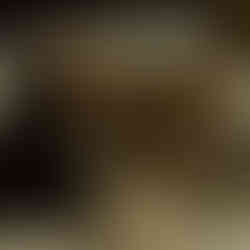Azawakh- A Landrace Breed
- Kayley Paylor

- Jan 2, 2020
- 3 min read
Updated: Nov 30, 2020
I posted this awhile ago on my facebook page and got a great response. Especially since we just finished the first National Chamionships and are coming up on the first Westminster since the breed was fully AKC recognized. You are going to start seeing the azawakh that have been bred strictly for refinement in the show ring and little eye to preservation start coming out.
I get asked fairly often (mostly by sighthound people who have little phenotype variation allowed within their breed standard) why there is so much physical variation within azawakh. In short, azawakh are a landrace breed.
As some of you likely already know, landraces are groups of dogs, typically in regionally isolated areas, that have developed with little human intervention. These dogs have physical similarities because of the environment in which they live. https://nationalpurebreddogday.com/purebred-v-landrace/
In Countries of Origin, Azawakh are certainly a landrace breed. The harshness of the region has led to every animal in the region resembling the body structure of a camel (long legs, taller then they are long, extremely lean). Look up Sahelian goats and cattle if you're interested. They have a very unique look to them.
The Sahel is not a uniform region and since natural selection is doing a fair bit of the work with Azawakh you see regional variations. A mountain dog is going to be heavier boned than dogs from a slightly easier climate for example.
When you translate a landrace breed into a western setting, writing a breed standard is extremely tricky. In my opinion, most landrace breeds that have become recognized by major kennels clubs are not fully encompassed by their breed standards. I think the Azawakh standard does fall into the category, particularly the FCI standard which keeps getting changed to be more and more restrictive. If you want an awesome example of a breed standard fully encompassing all the varieties check out the Pyrenean Shepherd standard.

It quickly becomes tempting to try to unify the breed, to seek homogeneity. After all, that's what breeds developed by humans are, so isn't that what all breeds should be? I think it would be a shame to lose the variations that exist. Moreover, when we have more diversity in our genepool, why on earth limit it? So many other breeds are struggling with limited genetics and are facing the prospect of outcrossing in other breeds to add genetic diversity. Azawakh don't have that problem.


Artificially restricting what is and azawakh and what isn't doesn't benefit us. Essentially the ten foundation dogs in the breed were a random assortment of dogs brought to Europe. They weren't "the purest" azawakh. They were relatively random. At least one of the foundation dogs wasn't from the region where "azawakh are the purest". Yet everyone has dogs with him in their pedigree. Why then do people say: azawakh don't exist in COO anymore? Why quibble over "Oska" and "Idi" (which are regional styles/types)?
There are no other dog breeds in the region. I've had this confirmed to me by people who have been to the region over and over again. Certainly there are rustic dogs. Dogs that don't fit the general breed type at all. I'm not suggesting we should breed to every individual in the region. No one is. But I'm certainly suggesting we should use individuals from COO for purposeful, intelligent breeding.
Note: their fronts look terrible in the picture with the three azawakh. This was just during a brief break in play and I took it because you can see the difference in amount of bone between the boys in particular.
















Comments